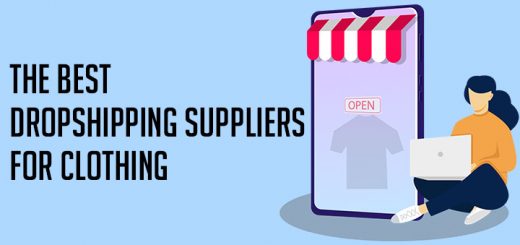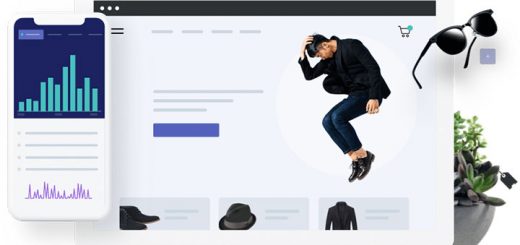5 Things You Need to Do If You’re Getting Traffic But No Sales
You’ve set up your online store, you’ve done some marketing, and you’re getting a lot of visitors to your website. But there’s one problem: no one is buying your products. What’s going on?
If you’re getting traffic but no sales, it means that something is preventing your visitors from converting into customers. It could be some factors, such as your website design, your product pricing, your customer service, or your target audience.
But don’t worry, there are some simple fixes you can make to turn your traffic into sales. In this article, we’ll show you five things you can do to improve your conversion rate and boost your online sales.
1. Increase Trust
Trust is essential for online sales, as customers want to buy from a website that they can rely on and feel safe with. If your website looks unprofessional, outdated, or suspicious, you will lose a lot of potential customers who will not trust you with their money or personal information.
To increase trust, you need to make sure that your website has the following elements:
- A clear and attractive logo that represents your brand identity and value
- A secure and easy checkout process that uses SSL encryption and trusted payment methods
- A contact page that provides your email, phone number, address, and social media links
- A refund policy that explains how and when customers can return or exchange your products
- A shipping policy that states how much you charge for shipping, how long it takes, and which countries you ship to
- A privacy policy that discloses how you collect, use, and protect your customers’ data
- A terms and conditions page that outlines the rules and regulations of using your website and products
- A testimonial section that showcases positive reviews and feedback from your previous customers
- A trust badge or seal that verifies your website’s security, authenticity, or quality
By adding these elements to your website, you can increase your customers’ confidence and loyalty, and improve your conversion rate.
2. Fast Loading Time
Another reason why customers may leave your website without buying anything is that your website takes too long to load. A slow-loading website can frustrate and annoy your customers, who expect a fast and smooth online shopping experience. According to a study by Google, 53% of mobile users abandon a website that takes longer than 3 seconds to load. Moreover, a one-second delay in page load time can reduce conversions by 7%.
To speed up your website, you need to optimize your website’s performance and efficiency. Some of the ways to do this are:
- Compress your images and videos to reduce their file size and bandwidth usage
- Use JPEG image files instead of PNG or GIF files, as they are smaller and faster to load
- Avoid using too many unnecessary apps or plugins that can slow down your website or cause conflicts
- Use a well-optimized theme that is compatible with your platform and devices
- Enable caching to store your website’s data on your customers’ browsers, so they don’t have to reload it every time they visit
- Use a content delivery network (CDN) to distribute your website’s content across multiple servers around the world, so your customers can access it faster from their location
By optimizing your website’s loading speed, you can enhance your customers’ user experience, reduce your bounce rate, and increase your conversion rate.
3. Have Necessary Page Setup
A common mistake that many online store owners make is that they don’t have the necessary pages set up on their website. These pages are essential for providing your customers with important information, such as your refund policy, your shipping policy, your contact details, and your About Us page.
These pages can help you:
- Establish your credibility and authority in your niche
- Address any objections or concerns your customers might have
- Educate your customers about your products or services
- Reduce your customer service workload and costs
- Improve your website’s SEO and ranking
Some of the standard pages that you should have on your website are:
- A refund policy page that explains how and when customers can return or exchange your products
- A shipping policy page that states how much you charge for shipping, how long it takes, and which countries you ship to
- A contact page that provides your email, phone number, address, and social media links
- An about us page that tells your story, your mission, your values, and your team
- A privacy policy page that discloses how you collect, use, and protect your customers’ data
- A terms and conditions page that outlines the rules and regulations of using your website and products
By having these pages on your website, you can increase your customers’ trust and confidence, and improve your conversion rate.
4. Test Your Price
Another reason why you might be getting traffic but no sales is that your price is too high or too low for your products. Your price is one of the most influential factors that affect your customers’ buying decisions. It reflects your product’s quality, value, and uniqueness.
To find the optimal price for your products, you need to do some market research and competitor analysis. See what other online stores in your niche are charging for similar products and how they position themselves in the market. Then, try to offer a competitive price that reflects your product’s quality, value, and uniqueness.
You can also use various pricing tactics to increase your conversions, such as:
- Offering discounts, coupons, or free shipping to entice customers to buy more or faster
- Using dynamic pricing to adjust your prices based on demand, supply, seasonality, or customer behavior
- Using psychological pricing to make your prices more appealing, such as ending them with .99 or .95
- Using bundle pricing to sell multiple products together at a lower price than individually
- Using tiered pricing to offer different options or levels of service at different prices
By testing your price, you can find the best balance between profitability and attractiveness, and increase your conversion rate.
5. Audience Targeting
The last thing you need to do to improve your conversion rate is to target the right audience for your products. Your audience is the group of people who are most likely to be interested in and buy your products. You need to know who they are, what they want, and how to reach them.
To target the right audience, you need to do some customer research and segmentation. You need to identify your ideal customer profile, which is a detailed description of your ideal customer, including their demographics, psychographics, behaviors, and preferences. You can use tools like Google Analytics, Facebook Insights, or Shopify Reports to collect and analyze data about your customers.
Once you have your ideal customer profile, you need to segment your audience into smaller groups based on their characteristics, needs, or interests. This way, you can tailor your marketing messages, offers, and products to each segment, and increase your relevance and conversions.
You can use various criteria to segment your audience, such as:
- Location
- Age
- Gender
- Income
- Education
- Lifestyle
- Interests
- Values
- Goals
- Challenges
- Buying behavior
- Buying stage
By targeting the right audience, you can increase your traffic quality, engagement, and conversion rate.
Conclusion
Getting traffic but no sales can be frustrating and discouraging, but it doesn’t have to be. By following these five tips, you can optimize your online store for conversions and boost your online sales.








